Where is Kristin Smart? Scientists say they found human remains evidence in California yard
Paul Flores’ conviction for murdering Kristin Smart closed one chapter in the 27-year-old mystery, but it didn’t answer her family’s most enduring question.
Where is Kristin’s body?
Solving that final part of the crime remains a top priority for the San Luis Obispo County Sheriff’s Office, and as it turns out, others as well.
Joining the effort are an environmental engineer, a scientist, a former FBI chemist and former prosecutor, who have banded together to look for Smart themselves.
Their findings from an innovative soil study — first reported by the Los Angeles Times — come from a familiar location: The backyard of Susan Flores, Paul Flores’ mother.
The team believes they have discovered evidence of a “human decomposition event” emitting from Susan Flores’ yard, but so far, no further known investigation by law enforcement has occurred there and the Sheriff’s Office isn’t commenting because the case remains active.
Susan Flores’ lawyer, Jeffry Radding, did not respond to multiple emails and phone calls asking for comment on the findings, and when a Tribune reporter visited Flores’ home to ensure she had a chance to address the allegations, her boyfriend, Mike McConville, took a photo of the reporter and threatened to call the police.
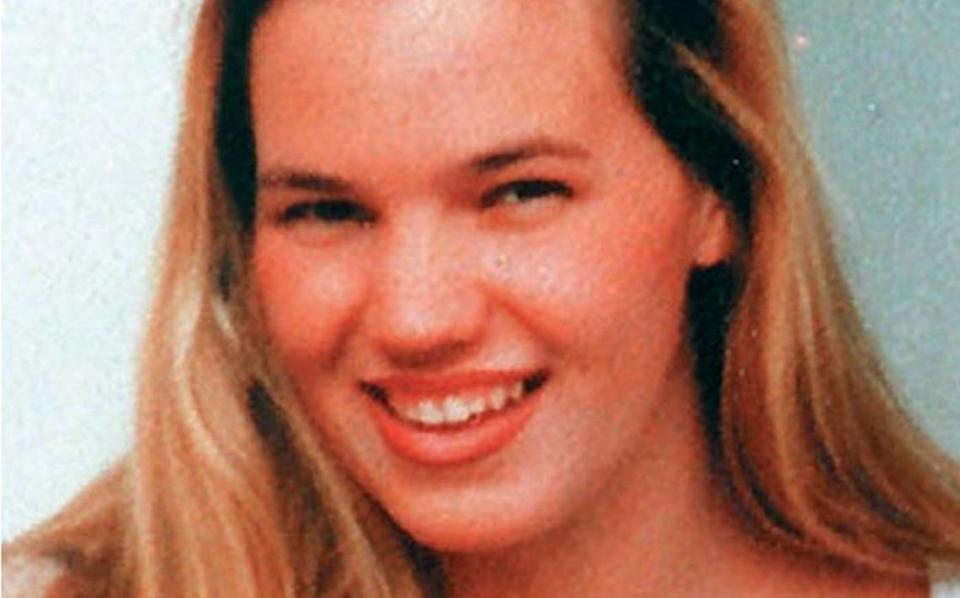
Kristin Smart knocked on soil tester’s door in college, he says
Tim Nelligan was in his junior year studying civil and environmental engineering at Cal Poly in 1996.
One week, he said, a tall blond woman knocked on his door — he lived off-campus — asking to use the phone. He let her in, she used their landline, then someone took her back to the dorms.
Then, about a week and a half later, that same woman was on the news. She was missing.
“That was quite a shock,” he told The Tribune.
He continued to follow the case over the years as he entered his environmental engineering career.
Fast forward to 2019: Nelligan had been an environmental engineer for two decades and owned Katahdin Environmental in San Clemente. One of his specialties, he said, is remediation, or reversing or stopping environmental damage, such as cleaning up storage tanks leaking underground.
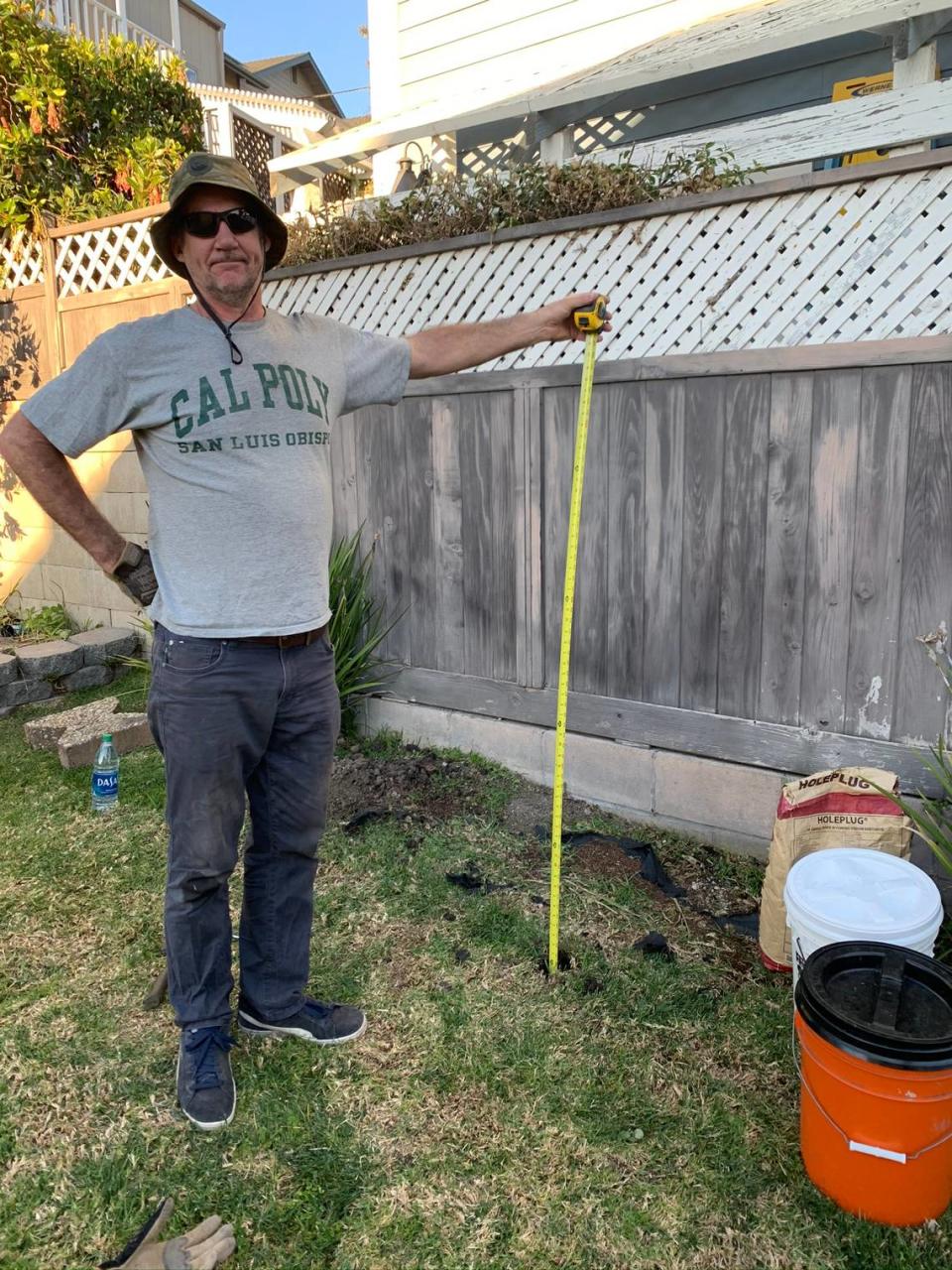
He said he is “very familiar” with detecting volatile organic compounds underground and wondered if he could use that technology to help locate Smart’s body.
Volatile organic compounds are gas molecules that have a high vapor pressure and low water solubility, according to the EPA. Many are human-made chemicals that are used and produced in the manufacture of paints, pharmaceuticals and refrigerants, while others emit from the natural decomposition process of living organisms.
“Cal Poly’s motto is ‘Learn by Doing,’” Nelligan said. “So really, I was committed, and I decided I’m going to do this.”
Soil near Susan Flores’ yard tests positive for human decomposition molecules, team says
Nelligan reached out to Steve Hoyt, who was a Cal Poly lecturer in 1996 and received a doctorate in environmental science and now works as an environmental chemist in San Luis Obispo.
Hoyt founded Environmental Analytical Service, a lab that specializes in testing for volatile organic compounds in air and soil vapor, according to his company’s website.
The two identified which molecules to test for based on research from a 2017 study that isolated “the odor of death,” as well as 2004 and 2008 studies that analyzed the odor of human remains and created a database of the volatile organic compounds emitted from those remains.
A 2015 study also found that volatile organic compounds expended from a decomposing human body were distinguishable from those that came from decomposing animals.
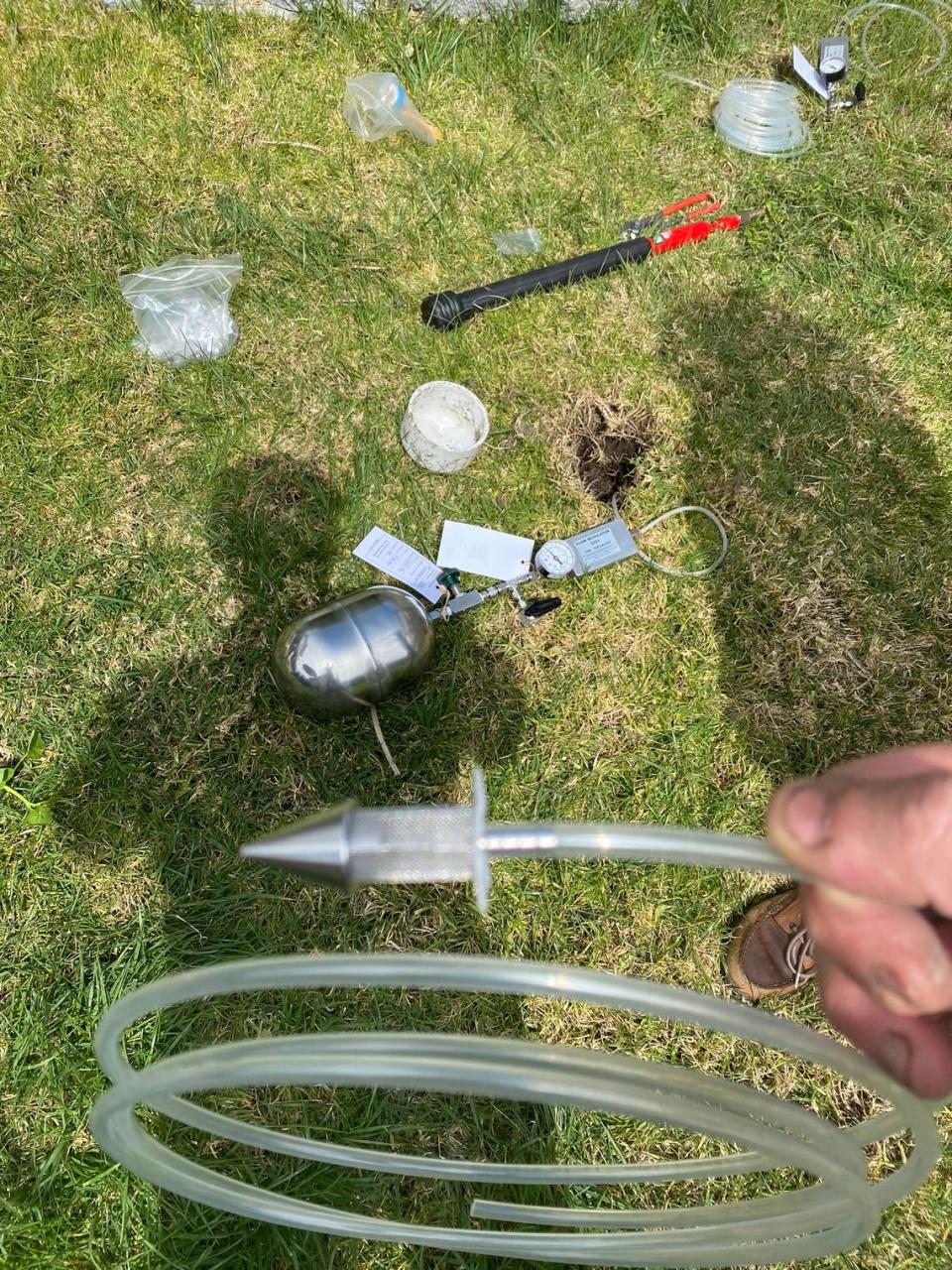
Hoyt told The Tribune the two selected 50 volatile organic compounds that were specific to the decomposition of human remains, based on the research.
Studies identifying the specific compounds expended from human remains date back two decades, most with the goal of creating tools to better train cadaver dogs.
Then, Nelligan and Hoyt set out to the home of Marcia Papich, who owns the house next door to Susan Flores on East Branch Street in Arroyo Grande. Papich agreed to let the two test the soil near the back fence, which she shares with Flores’ yard.
Their first test was in February 2020.
Nelligan said the two applied the same methodology that would be used if they were looking for vapor from an underground leak, only they specifically tested for the molecules that are present when a human body decomposes. It involves drilling several holes as much as five feet deep across an area and measuring the levels found in each one.
The method is “industry standard” for testing in the EPA, but, to Nelligan’s and Hoyt’s knowledge, this is the first time it has been used to detect human remains.
Nelligan said the pair applied an “unbiased scientific approach” to the testing and took control samples in other areas near Flores’ yard. They were prepared for the test to come back without any human decomposition molecules detected.
But the opposite happened.
The results from that first test showed there were several volatile organic compounds consistent with a decomposing human body concentrated at the border of Papich’s and Flores’ yards.
“I was shocked at the number of compounds,” Hoyt told The Tribune. “These are pretty unique compounds. They form like a fingerprint.”
The pair tested the area again in December 2020, August 2021, and March 2023. All yielded the same result: Molecules only present when a human body decomposes were present next to Susan Flores’ back fence.
The two used computer modeling to create heat maps that showed red zones spreading into Papich’s yard from beyond the fence line where volatile organic compounds were found at levels of more than 3,100 parts per billion in the soil in their highest concentrations.
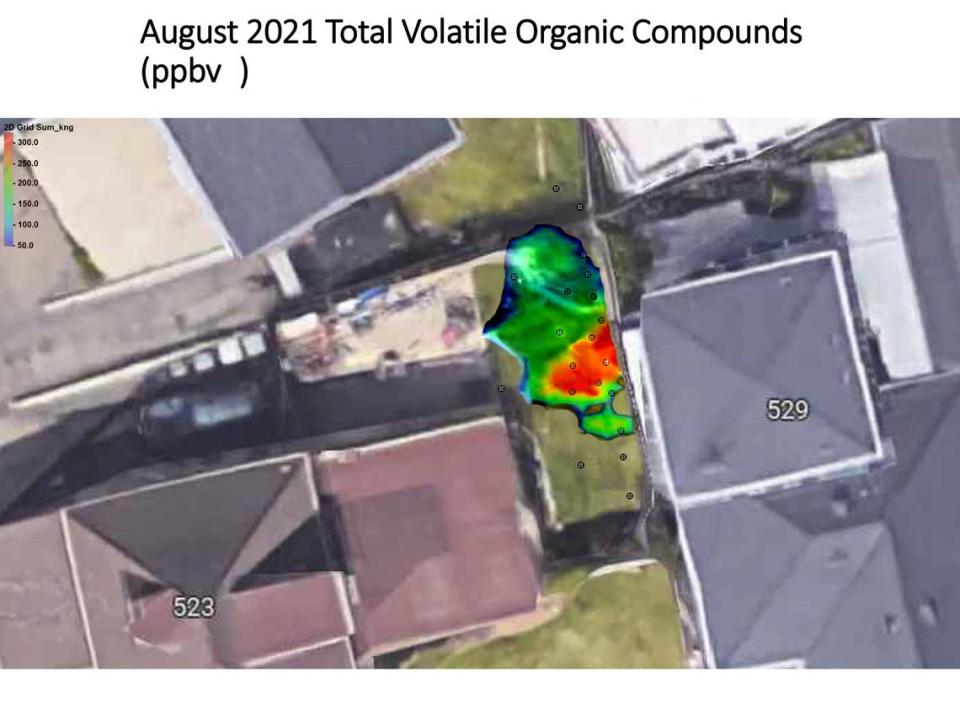
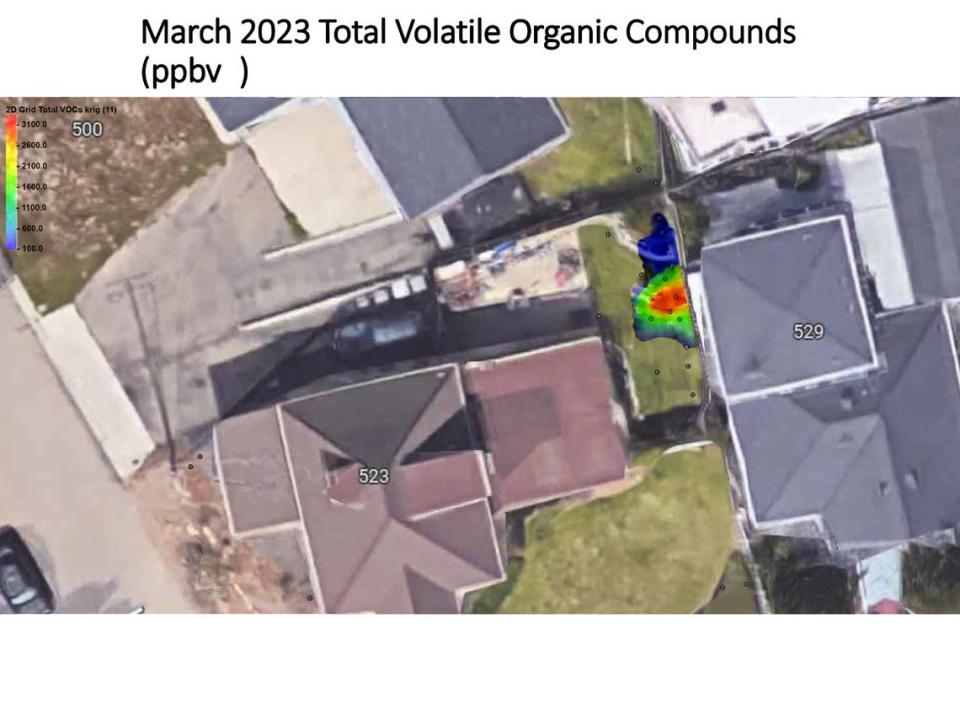
“There’s something compelling about this site that keeps bringing us back, and we keep finding the same results over and over again,” Hoyt said. “It means that, you know, it’s just not some fluky thing that happened once.”
According to their data, more than 90% of the volatile organic compounds found when a human body decomposes were detected near the fence. The only compounds that were not detected were those associated with decomposing flesh, which would not be expected this long after Smart’s disappearance, Nelligan said.
The men said sent their research to former FBI chemist Brian Eckenrode, who authored two of the studies that helped them isolate compounds to test for and later accompanied them on the March sampling. They said Eckenrode helped confirm their results and joined the team in 2021 when he retired from the FBI.
Eckenrode, who is now an associate professor in analytical chemistry at George Mason University, told The Tribune the method the two men used to collect human remains vapor was similar to what he used when he was collecting data for his research.
This is just the first time a method like this is being used in a case, he said.
The former FBI chemist attended the March 2023 test, where he helped collect more controls and confirm data from various test sites.
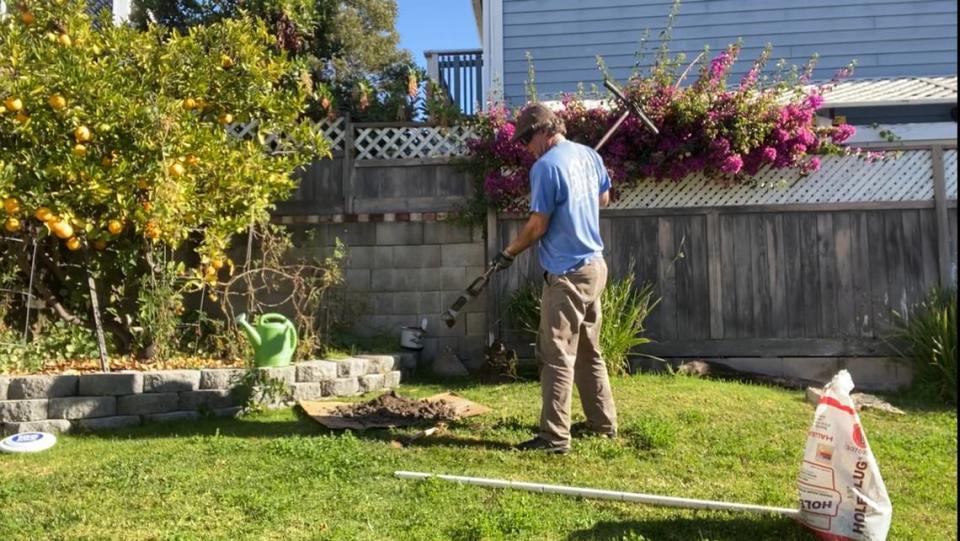
He said when anything decomposes underground, soil acts like a “trap” when it comes to the chemicals that are emitted, so they could be present for decades.
One of his studies at the University of Tennessee Knoxville’s Body Farm, Eckenrode said, included a body that had been decomposing for 20 years, and it yielded similar results to what Nelligan and Hoyt found near Susan Flores’ yard.
According to computer modeling of the data done by the team, volatile organic compounds were concentrated at the center portion of the fence shared between Papich and Susan Flores.
The amount of compounds and their concentration suggest it is likely a human decomposition event occurred in the area, Eckenrode said.
Alleged molecules are in area that had never been searched, podcaster says
Former prosecutor Tim Perry has since joined the men to help them communicate with law enforcement. He told The Tribune that after reviewing the men’s work, “99 out of 100 prosecutors would authorize a search warrant.”
“Now it’s just the Sheriff’s Office’s option whether they want to leverage the science or not,” he said.
According to his personal website, Perry served as assistant U.S. attorney in the Southern District of California from 2008 to 2014. He then was appointed to Gov. Gavin Newsom’s chief of staff and deputy homeland security adviser at California’s Office of Emergency from 2019 to 2020 before later being appointed to the U.S. Department of Homeland Security under President Joe Biden’s administration, serving as chief of staff for Immigration and Customs Enforcement from 2021 to 2022.
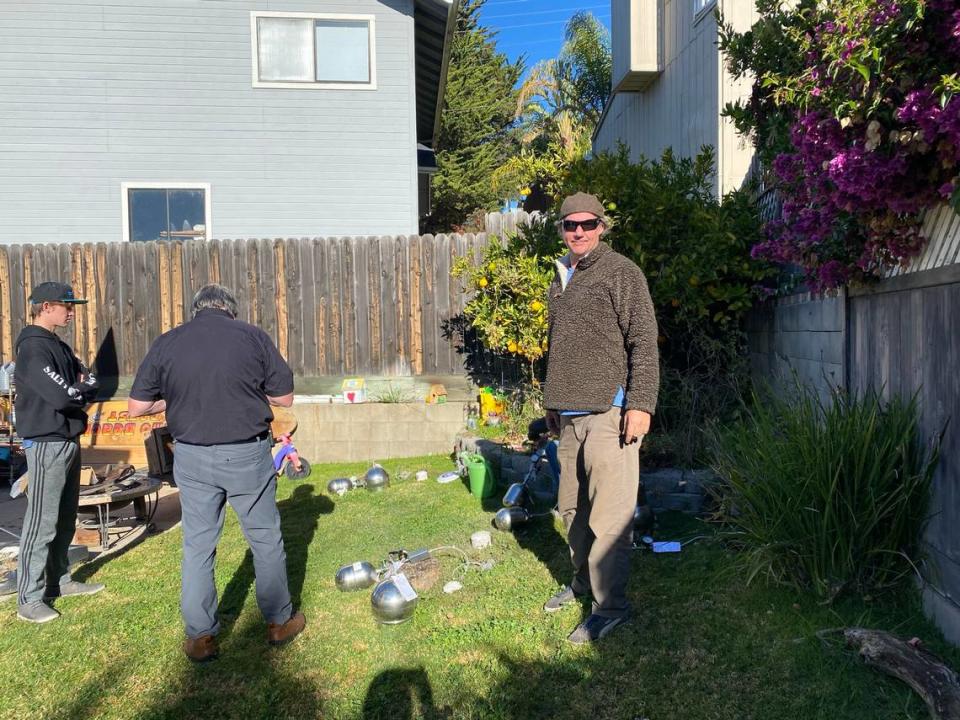
The men have shared their findings with the Sheriff’s Office and the Smart family.
In a text message with The Tribune, Stan and Denise Smart said they admire the team’s commitment and scientific approach.
“We long to lie her to rest in the presence of those who love and cherish her along with those who continue to work to this day to bring her home,” they said. “Our hope is that NO stone will be left unturned!”
The Sheriff’s Office said it cannot comment on the case because “This case is on appeal and as such, it is still considered an active investigation.”
San Luis Obispo County sheriff’s Det. Greg Smith did tell the Los Angeles Times that the department is investigating the work to determine whether it might be useful in the case. Chief Deputy Nathan Paul also told the Los Angeles Times that sheriff’s officials have been in touch with the FBI about the research.
The leading theory — and the theory Paul Flores was convicted on — was that at some point Smart was buried beneath Ruben Flores’ deck before she was moved in February 2020. It’s unclear how the men’s findings will affect that theory.
The men also shared their findings with Chris Lambert, host of the “Your Own Backyard” podcast, which investigated the case. Lambert told The Tribune the findings were “interesting.”
“Because Kristin’s body is still outstanding, it’s compelling to me,” he said. “But I’m careful and always cautiously optimistic with this stuff because it’s not definitive and it’s not tied to Kristin.”
Lambert noted that Susan Flores’ yard has been searched twice over the past 27 years — once in 2000 by the Sheriff’s Office and again in 2007 during the civil suit.
Lambert, who has obtained documents from the 2007 search, said he didn’t know much about the results of the Sheriff’s Office search in 2000, but said it was thought to be not thorough, adding that there was no intention to dig the yard at that time.

The 2007 search, however, did allow digs. Ground-penetrating radar, which is used to detect underground anomalies to isolate a potential excavation area, was used in the search, but it could not go within two feet of the fence dividing Flores’ yard from Papich’s, Lambert said.
To Lambert’s knowledge, the area near the fence has never been searched.
To make it more interesting, Lambert said, the Flores’ family had installed two planter boxes adjacent to the fence in June 1996, about a month after Smart disappeared. Lambert said he knows this because Paul Flores said in his interview with investigators in June 1996 he had to help clean up concrete at his mother’s house.
Susan and Ruben Flores also both mentioned installing the planter boxes in their civil depositions, he said. It’s also the area where former tenants of Susan Flores said they thought they heard an electronic watch beeping, Lambert said.
Lambert says he would like to see the findings followed up on by law enforcement, but understands there are restraints in what evidence can be used to obtain search warrants, especially since the findings are using a new approach.
He added that the data analyzed by Nelligan, Hoyt, Eckenrode and Perry indicates there was a human decomposition event in that area, which means it could be ancient just as much as it could be Smart.
“There’s still so much we don’t know about what happened,” he said.
Lambert said it’s important to not jump to conclusions and try to make the findings fit into the prosecution’s theory or the timeline as it’s currently known.
“Because Kristin’s body has still not been recovered, anywhere that there’s compelling evidence of where she could be I would like to see followed up on,” Lambert said. “Obviously, if it’s connected to the Flores family and the Flores family are suspected of having her body or moving her body, I would like to see those properties crossed off and thoroughly searched.”
When it comes to the work they’ve done, Nelligan said he hopes the data is compelling enough for the Sheriff’s Office to take action.
He added that the team hopes to continue this work beyond Smart’s case to help with other missing persons cases and cadaver dog training.

